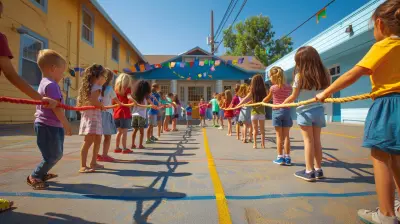19 July 2025
Let’s be honest—virtual learning isn’t always sunshine and rainbows. Between frozen Zoom screens, muting mishaps, and the never-ending temptation to Google all the answers, students can find it tough to engage deeply with the materials. But here’s the thing: critical thinking is still 100% essential, maybe now more than ever. And guess what? You can totally nurture it—even in pajamas, behind a screen.
Whether you're an educator or a student trying to hack your way to better outcomes, this guide will walk you through how to encourage critical thinking in a virtual learning environment without making it feel like pulling teeth. Ready? Let’s dig in.
What Even Is Critical Thinking, Anyway?
Before we get into the “how,” let’s talk about the “what.” Critical thinking isn’t just about criticizing stuff or poking holes in arguments. It’s about questioning assumptions, analyzing information, evaluating evidence, and coming to thoughtful conclusions.Think of your brain like a detective. Critical thinking is the magnifying glass that helps you spot clues, ask “Why?” a hundred times, and distinguish fact from fiction. And yes—it works in online classrooms too, when cultivated the right way.
Why Critical Thinking Matters Even More Online
In a traditional classroom, students might just nod along or get nudged by a side-eye from their neighbor if they’re zoning out. Online? It’s much easier to slip into the background.That’s why building critical thinking skills in a virtual learning environment isn’t just helpful—it’s vital. It helps learners become independent thinkers, not passive consumers of information.
Here’s why it matters:
- ✅ Prepares students to handle information overload (hello, internet!)
- ✅ Reduces the risk of falling for misinformation
- ✅ Promotes deeper engagement with course material
- ✅ Builds confidence in forming and voicing opinions
So, how can we make it happen?
1. Start With Open-Ended Questions 🧠
If you want to kickstart those brain gears, ditch the yes/no questions. They’re like dead-end streets. Open-ended questions, on the other hand, are highways that lead to all kinds of interesting places.Try:
- “What do you think would happen if…?”
- “Why do you believe this perspective is valid?”
- “How would you approach this situation differently?”
These spark curiosity and encourage students to explore instead of regurgitate.
Pro Tip: Let students ask the questions too! Have them submit thought-provoking questions about readings or lectures. You’ll be surprised how insightful they can be when given the chance.
2. Use Virtual Breakout Rooms for Debates 💬
Who says you need a physical classroom for a good ol' healthy argument? Well-structured debates can bring lessons to life and push students to consider multiple viewpoints.Set up breakout rooms and assign teams to argue different sides of an issue. The key is not to win, but to think critically about the evidence, counterpoints, and logic involved.
Just don’t forget to set clear guidelines so nobody goes full-on debate club battle mode. Keep it classy, folks.
3. Encourage Reflection Journals 📓
Think of reflection journals as little gardens where critical thinking can bloom over time. When students are asked to write about what they learned, what confused them, or how their thinking changed, they start to internalize the material.In a virtual setup, tools like Google Docs, Padlet, or course-specific forums can be great for these journals. Encourage regular entries with prompts like:
- “Before, I thought… but now I think…”
- “What surprised me this week?”
- “How does this connect to real life?”
It’s like having a conversation with your past self. Reflecting = adulting for your brain.
4. Make Use of Interactive Tech Tools 🔧
Let’s face it—nothing kills critical thinking faster than death-by-slideshow. To really engage students, reach into your digital toolkit.Try tools like:
- Kahoot! or Quizizz for concept checks that include explanations
- Miro or Jamboard for virtual mind mapping
- Flipgrid for video discussions where students respond to each other’s ideas
- Padlet for collaborative idea boards
The more interactive things are, the more likely your students are to actually think, not just click.
5. Foster a Safe, Judgment-Free Virtual Space 🌈
Would you want to share your ideas if you felt like you'd get roasted for a wrong answer? Nope. And neither do students.Create a culture of curiosity, not perfection. Praise effort. Validate questions. And when someone gets something “wrong,” treat it as a doorway to deeper thinking, not a dead end.
Say things like:
- “That’s an interesting angle—what made you think that?”
- “Let’s explore that more together.”
- “I’m glad you brought that up!”
Psychological safety is non-negotiable when it comes to encouraging open minds.
6. Turn Real-World Events into Class Discussions 🌍
Critical thinking doesn’t live in a textbook. It thrives out in the wild, in current events and real-life dilemmas.Bring in fresh, real-world examples that connect to your curriculum. Have students analyze articles, compare sources, and discuss ethical implications.
For instance:
- In a history class? Compare past and present social movements.
- In a science class? Debate the ethics of scientific innovations.
- In a lit class? Connect themes in a novel to today’s headlines.
Relevance boosts retention—and critical thinking.
7. Emphasize “How” Over “What” 🤔
It’s tempting to focus on what students know. But what really matters is how they know it.Encourage metacognition (a fancy word for thinking about thinking). After a lesson, ask:
- “How did you arrive at that conclusion?”
- “What made this challenging?”
- “What strategies helped you understand it?”
This builds self-awareness and nurtures those mental muscles that make critical thinking second nature.
8. Break Up Monotony with Case Studies and Role-Playing 🎭
Who doesn’t love a little drama? (Educational, of course.)Case studies and role-playing exercises help students literally “step into” real-world scenarios and think critically about solutions, consequences, and points of view.
Examples:
- Pretend to be a historical figure during a debate.
- Analyze a business dilemma from the perspective of different stakeholders.
- Solve a medical mystery based on symptoms and test results.
It’s basically cosplay for your brain.
9. Celebrate Different Types of Thinking 🎉
Not all critical thinking looks the same. Some students are analytical, others more creative or emotional in their reasoning. And that’s okay!Create assignments that allow for different styles:
- Essays or infographics
- Podcasts or visual storytelling
- Group projects or independent critiques
When students are allowed to express their ideas in their own voice, their thinking shines brighter.
10. Be the Model You Want to See 👀
Want your students to think critically? Then show them how it’s done. Talk through your own thought process when analyzing something. Admit when you’re uncertain. Show how to revise an opinion based on new information.Modeling is powerful—more so than any slide or assignment.
Think of yourself as a thinking coach, not just a content delivery machine.
Bonus Tips for Students: How to Boost Your Own Critical Thinking Online 🧠💪
Hey students, we didn’t forget about you! Here are a few hacks to upgrade your thinking game while learning online:- Ask “why” one more time than you think you should.
- Don’t just accept things—test 'em.
- Cross-check info before you trust it (especially from social media).
- Talk about what you’re learning with others—yes, even your dog, if needed.
- Be okay with not having all the answers. That’s where learning really starts.
Wrapping It Up: Brains Over Bandwidth
Critical thinking isn’t about knowing everything. It’s about knowing how to think, question, analyze, and problem-solve, even when Google doesn’t have the answer.In the virtual world, it takes a little more creativity, a dash of patience, and a lot of intentionality. But the rewards? Totally worth it. You help create smarter, more curious, and more capable human beings.
And hey—that’s pretty cool, right?








Anisa Sullivan
Great insights on fostering critical thinking! Incorporating interactive activities and encouraging open discussions can significantly enhance student engagement in virtual settings. Keep up the fantastic work in promoting thoughtful learning!
November 23, 2025 at 3:42 AM